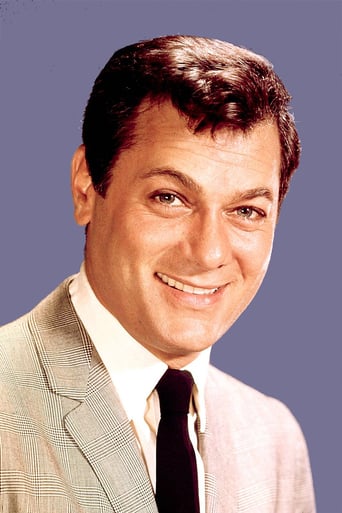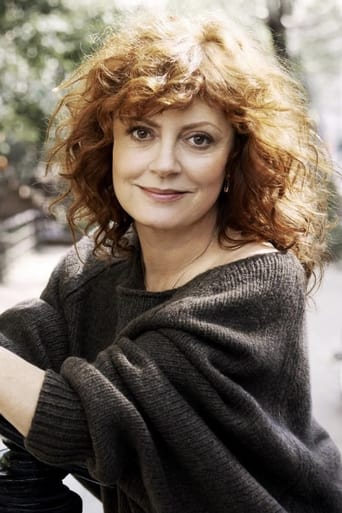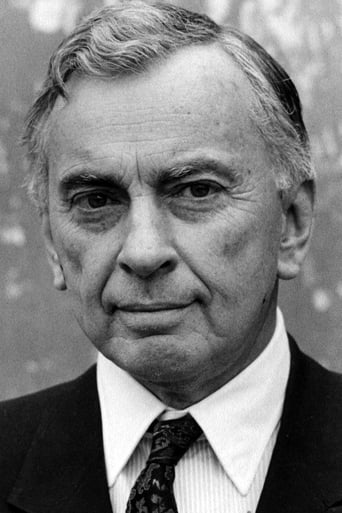Scanialara
You won't be disappointed!
Wordiezett
So much average
Chirphymium
It's entirely possible that sending the audience out feeling lousy was intentional
Mathilde the Guild
Although I seem to have had higher expectations than I thought, the movie is super entertaining.
Goingbegging
Before writing this, I briefly scanned the other IMDb reviews, to see how many of them had earned a yes/no reaction from the readers, and how many were left blank. It scored an incredible 44 out of 45, revealing an intense, and perhaps secretive curiosity about the shadows of gay Hollywood.If you're looking for landmarks, there's one from 1895 in an experimental clip by Edison showing two men in a slow, embracing dance. This startling scene, from the very pre-dawn of the movies, carries no explanation, but it confirms how little you and I know about the sheer persistence of the gay theme in the story of film.For most of that time, gay messages had to be made in code, just as they did in real life, 'lavender' and 'artistic' being among the more regular codewords. But inevitably, the government hit back with its own code (the Production Code of 1930), banning any narratives that threatened the sanctity of hearth and home. This, of course, was when the talkies were starting-up, the silent medium having provided its own discreet opportunities for slipping homo-eroticism into the story.For about the next thirty years, you could feature a more-or-less openly gay character, as long as he was seen to be distinctly evil, something to be feared and excoriated, preferably killed-off. Or it might not even be a 'he'. One early example of code-busting was Gloria Holden as a predatory lesbian, only permitted as long as she was cast as Dracula's Daughter! But the codes had to be rather more subtle when the man in question was not the campy one but the masculine hero with the Achilles heel - on which point Spartacus, Ben-Hur and Cat on a Hot Tin Roof come in for well-earned psycho-analysis. According to Ben-Hur scriptwriter Gore Vidal, they never revealed the gay subtext to the assertively normal Charlton Heston, for fear that he would walk out.By now, the industry was heading for another landmark. Just before the 60's became the 60's, the secretly-gay British filmstar Dirk Bogarde risked his career in a film called Victim, about a decent and responsible man confessing all - though he too is made to suffer for his sins. Not till 1970 and The Boys in the Band is the gay scene allowed to appear harmless and wholesome. One critic makes an interesting point about judging other eras: "There was a time when men were free to express tenderness on the screen." Ironically, in supposedly enlightened times, it may be our own generation who have become cynical, always ready to believe the worst.Narration is supposed to be by Lily Tomlin, but so many other commentators join in the debate that she is largely lost. We assume that Secret Love, sung by Doris Day, is supposed to be a lesbian coming-out song, but we aren't told. And there's a great irony in the clip from Pillow Talk, showing Rock Hudson acting a straight man pretending to be gay. News of Hudson's secret gaiety and death from AIDS was surely another landmark in the long, tortured history of the celluloid closet.
guigy93
The Celluloid Closet is a wonderful documentary that gives an overview of homosexuality in films throughout the decades. This film manages to be both a joy to watch, while giving rare insights into classic films through actors and screenwriters such as Tony Curtis, Gore Vidal, Jay Presson Allen, and Whoopi Goldberg. Celluloid Closet manages to give a frank view of how homosexuals were portrayed without condemning or belittling any group of people. There was startling revelations of how far homosexuality had to come; from being portrayed as "sissies", villains, completely ignored, something to be ashamed of, or something to be condemned. The discussion of how homosexuals were made into villains was particularly shocking and upsetting. In addition, the Hays Codes surprises a modern film goer with the strict regulations. The documentary brings to light how movie producers managed to get the point across while being subtle enough to avoid being cut. Perhaps most importantly, the Celluloid Closet captures how gay people felt ostracized and ashamed while watching films growing up. Overall, this film was a joy to watch, funny, at times heartbreaking, and a must see for anyone interested in queer cinema, one could only wish for a continuation into today's films.
mjbrody
This is an excellent documentary, narrated by Lily Tomlin, on queer subtext and gays in American cinema from the 1930s to the 1990s, loosely based on Vito Russo's groundbreaking book (1981, revised edition 1987) of the same name. In it, a wide range of thoughtfully-chosen film clips is paired with director, producer and actor interviews (such as Gore Vidal, Tom Hanks, Susan Sarandon, Armistead Maupin, Tony Curtis, and Whoopi Goldberg). Beyond containing lots of wonderful behind-the-scenes factoids, major issues to queer filmmaking such as coded language, censorship/ratings, the Hayes Codes, and straight/gay actors playing gay are addressed. The only thing one could wish for is a revised/extended film that would include the important gay films made after 1993 or so.
taylorlandis
"The Celluloid Closet" is a very informative, interesting documentary that evaluates the way Hollywood has presented homosexual relationships beginning in the 1930s. From the very beginning when homosexual relationships began to appear in films, Hollywood has always had an influence on the audience of what to think about gays, as well as how gays should feel about themselves. In early appearances, the homosexual hints in films was not discussed publicly after being viewed, it was sort of ignored and thought of as comedy. After homosexual scenes became more and more prevalent and common, the Catholic and Protestant churches grew very angry, starting boycotts of any film that hinted even the smallest bit of homosexuality. Film writers and directors began finding other ways to project homosexuals, by making it harder to catch the gay hints or even making the homosexual character a "villain" in a sense. This homosexual "villain" character was very common in films until the British film "Victim." This particular film was the first to actually use the word "homosexual," therefore beginning another era of homosexuality in films. Although the "homosexual" word was not used openly in films, gays seemed to perceived as having a "mental illness" now. In addition, audiences were applauding villains, killers, or the killed if they were homosexual. They seemed to enjoy the homosexual characters' pain while watching these films. Overall, "The Celluloid Closet" takes its audience on the journey through the evolution of homosexuality in Hollywood films. Clearly this film is wonderful in itself as it explores other very famous films throughout history, discussing how homosexual scenes were presented in many of them.





